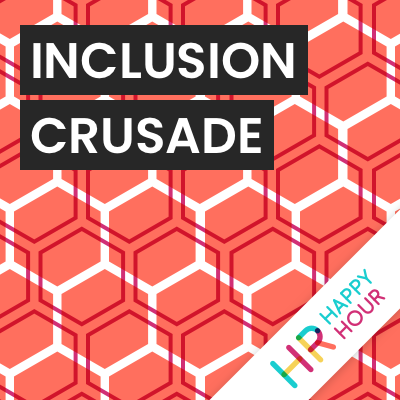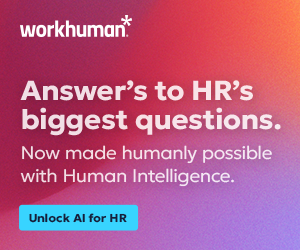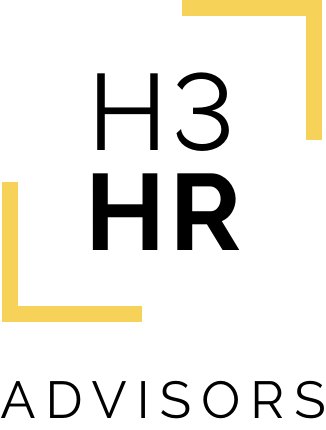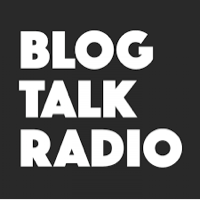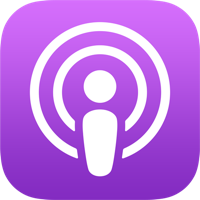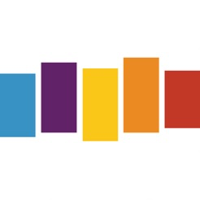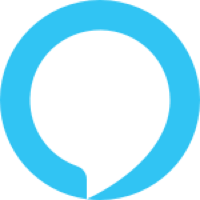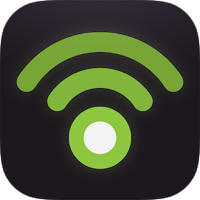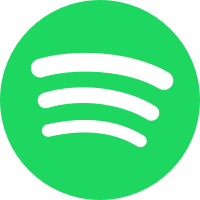Inclusion Crusade 4 – Identifying Microaggressions with Technology
Hosted by
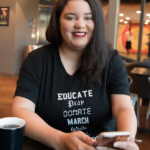
Sarah Morgan
CEO, Buzz A Rooney, LLC
About this episode
Inclusion Crusade 4 – Identifying Microaggressions with Technology
Host: Sarah Morgan
Guest: Michael Ogunsanya, Founder of Mindstand
In this episode, host Sarah Morgan and her guest, Michael Ogunsanya, discuss how technology can be used to identify negative communication patterns, including microaggressions, to help managers coach and correct employees.
Michael Ogunsanya is the founder of Mindstand, an AI software designed to understand the intent and context of conversations to provide leaders with alerts on what really matters within your community. Learn more about Mindstand through their website and on Twitter. Connect with Michael Ogunsanya on LinkedIn.
Thanks for listening!
Transcript follows:
Sarah Morgan 0:02
All right, everybody. Welcome to the HR Happy Hour Network. This is the Inclusion Crusade with me, Sarah Morgan. I am on a mission to create workplaces where employees feel safe, seen and supported one episode at a time. So today I have the privilege of bringing to you the brilliant founder of Mindstand, Mr. Michael Ogunsanya. Michael, welcome to the Inclusion Crusade. Thank you so much for joining me.
Michael Ogunsanya 0:34
Thank you so much for having me. It’s awesome.
Sarah Morgan 0:36
So Michael, tell the listeners about yourself and about Mindstand, and what you are doing with this breakthrough HR technology that you have created?
Michael Ogunsanya 0:49
Absolutely. So Hello, everyone. My name is Michael Ogunsanya. Just turned 23. This season’s around the corner. But before I really explain why Mindstand exists, I’d love to start with a story on how I was a young, bright eyed 18 year old, fresh college intern at a fortune 10 engineering firm. As we know, you know, the goal is as a young age to be able to matriculate in these large companies, I understand what it looks like to be successful in your own space. You know, I remember receiving the internship and I was invited to a pre, kind of accepted invite, opportunity where as soon as I walked in the room, professor’s, campus relators, people, even people at the company started clapping, just recognizing the opportunity that I have within this organization. But the thing that happened was, you know, while I was there, I was so excited to be a part of this culture. Again, thinking I’m getting paid $20 an hour. So, you know, I’m living the life for an 18 year old.
Sarah Morgan 2:04
Yeah, for sure.
Michael Ogunsanya 2:06
And so with that in mind, you know, I dress the part, if you ask my mom, she told me I wore my Sunday’s best.
Sarah Morgan 2:14
Good, good, clean socks and everything yes.
Michael Ogunsanya 2:18
You know, young kids usually never matched their socks. For me, it was a straight edge. So at the button up shirt and glasses, I was getting so matriculated in this company, attending all hands meetings, really building that rapport within this organization. And about a couple weeks into the program, I came into work with a bit of a different appearance. And that day changed everything for me. Instead of my typical button up shirt and glasses, I wore a polo shirt and wasn’t wearing my glasses. I sit down that day, and this is more towards lunch hour, my supervisor, he approaches me, this is a guy who’s 30 to 40 years older than me, a white man from Delaware. He’s joked with me before and said, Oh, I’m just the office hillbilly. So don’t take anything I say too personal.
Michael Ogunsanya 3:05
But I knew I was coming in not only representing myself, but so many other young, black and brown innovators in the tech space. So what he said really threw me off. He came up to me that day, approached me and said, Hey, Michael, I almost didn’t recognize you there. I thought you were like a thug or something. And I’m just like, What? You know, and then. And that’s the important thing, you know, when we’re thinking of creating more inclusive, more brought together employee work cultures, it’s all about the micro, the micro and the macro. So in that moment, Sarah, I’m just thinking to myself, you know, like, what is going on. But I also knew, you know, don’t overreact. Don’t say anything that you may regret later. Because for a lot of bipoc, LGBTQ, API, just underrepresented people in the workforce, the worst thing that can happen is being labeled aggressive, or argumentative. All these words are the bane of our careers. I got a first hand experience at 18 what that feeling felt like, Oh, so I remember going home that night and researching, you know, HR, the only thing I knew was Toby Flenderson from the office,
Sarah Morgan 4:24
Which is not the representation of HR that anybody wants. Oh, wow.
Michael Ogunsanya 4:31
Exactly. So I’m googling and I’m trying to find, you know, what can I do, you know, as an employee to let the company know how they can get better. I’m flipping through their Handbook, trying to find some resources. And the thing that I saw was that there’s really one of two options I could have taken. And the first is, of course, I could have went to a local reporter, a campus reporter, someone higher up in the company. And then the question is, if I report this incident, how would this be perceived as the reputation of the company. I can’t tell you how many organizations are looking at their Glassdoor rating, and cringing. Because there’s this concept of, we’re hiring diverse talent. We’re creating employee resource groups, but there’s no level of feedback. There’s no level of active proactiveness that we’re giving employees. So we know how they feel before you know the, we get the red letter, or we get to two weeks notice. Again, I’m in this position where I knew if I told a higher up in the company, would this be the next headline, multibillion dollar company fails to address its diverse workforce, and focus on you as the whistleblower, but I couldn’t see that as you know, ethical, right. But then I saw the only other option was a common tool called conflict mitigation. I tell the HR manager in the office and she would have put me in a room with the supervisor, so that I could explain my thoughts to him. My perspectives, it kind of felt like I had to educate him on why what he said was a microaggression.
Sarah Morgan 6:06
Right at 18 years old.
Michael Ogunsanya 6:08
Four or five black people in the entire engineering wing, that I deal with scaring. So calm between those two I chose neither, you know, and I learned I’m not alone. Over 40% of victims of workplace harassment never speak up, or fear of retaliation or, or retribution. So in the initial concept of mine, Stan came to be between my other two amazing co founders, Eric Salander and Nikita Wooten, this simple tool so that parents can install it on their kids phones, so that they can know if their kids are being bullied online, or bullying someone else. That initial idea won awards at a hackathon. But I soon saw that fit that could have in the corporate world, and especially with COVID. You know, our tool, my AI’s goal is to integrate within Slack, Microsoft Teams, all of these remote work tools we’ve gotten so used to, to listen in on communication conversations company wide, so that we can better train companies around inclusive language, better implement successful DNI strategies, and understand really what culture fit means in your organization.
Sarah Morgan 7:19
That’s amazing. So first of all, I just want to pause on this story. Because you touched on so much, because you’ve told this story to me before. And in my mind, you know, I’m always doing the math, right? Because you’re you’re like my little brother in my head. So I’m trying to but then like I’m having to. So I’ve always wanted wondered, and I’ve never asked you, but I’ve always wondered how old were you when this happened? So to hear that you were 18 years old, like I have a 18 year old, right? And I can’t fathom what how that must have felt. And then like for your mom, and for your your parents, and for all the people and then you having the added pressure of feeling like you’re carrying all of that on your back at 18 years old, Mike Oh, but you’re right, though, in that what you experience is so accurate to what people of color, black and indigenous, LGBTQ Plus, the Asian Pacific Islander community like all of us marginalized identities. This is what we are experiencing from the moment we enter the workforce. And your story just encapsulates that so well. And thank you for sharing that. And thank you also for putting that context of age onto it because I want the listeners to recognize that like, I think about myself 18 years old, and like I said, I have a I have a 18 year old in college, we gotta go get him for fall break tomorrow, like, I can’t fathom, you know how excited you must have been to be to gain an internship at this company, this fortune 10 company like this is elite stuff, and how exciting that must have been for you. Only to be not that far into it. And to have this utterly, just a moralizing experience. But kudos to you that you took it and turned it around and made it a calling and made it a mission. And so tell us now, how Mindstand Ai, how does it work? What because I know listening to this people are going to fall in love with it. I know that we’re going to talk some more about how they can get involved with with all of the testing and things that you’re doing now, but talk to me about how it works.
Michael Ogunsanya 10:07
We’ve built it to be as simple and as low touch as possible, while delivering the most effective results. So Mindstand, let’s say you work for Deer Park. Operation Deer Park, there’s 50,000 employees, you use Microsoft Teams to communicate with one another. The thing that we do is we set up DeerPark.mindstand.com. We hit sign on access to anyone in the organization, specifically supervisors, directors of HR, and those people leaders. And the goal is how can this dashboard better educate you on what inclusion looks like over time, based on the data that makes you new, communicate with one another? to Mindstand’s goal is we integrate within these messaging platforms, whether it’s email or corporate messaging tools, and how we go about providing analytics really sits within the dashboard. We spend the first four to six weeks offering initial office hours, lunch and learns on what does burnout look like in the workspace today, digital citizenship, a concept that’s prominent in K through 12 but really lacks in the corporate space.
Michael Ogunsanya 10:23
Yeah, it does look like from there, we’re able to again, be a resource to the employees, pleople who’ve been wondering, you know, how can I manage my work life balance, especially using these new remote tools for really providing that level of education so that people have this, this level of understanding that they may not have had beforehand? From there, we dive in and do focus groups within the organization. Understanding what are the initiatives that you’re aiming towards leading to knowing that again, it’s amazing to have an initiative to recognize what it’s like to employ people of color people of marginalized communities, but you have to create a safe environment where they feel welcome. And, you know, they say, and this is a common psychology stat. You know, the person who’s the most productive bar none in the organization, is the person that feels the most comfortable and comfortable in their environment. And that’s what mindset is fostering for to ensure that you can see how new hires if you’re looking at new hire matriculation Mindstand can show you how their engagement increases over time, to a point where someone you hired around a year ago, within six months now feels fully aware, and welcome within their environment.
Michael Ogunsanya 12:38
For employees that feel entirely comfortable, or employees that may be part of the majority. If they do say something that is potentially harmful, or potentially harassing to someone, don’t leave it up to HR, don’t just silo it or wait until the bubbles up, allow Mindstand to better coach that employee around respectful communication. Just a message as simple as Hey, Fred, we noticed the message you sent earlier may be potentially harmful, another employee did bring this up to us, we just want to let you know, how do you feel, creating a wellness check so that people can understand how they may be able to better be better coached, without it being a sit down 360 review, or that it being something that’s mentioned, as the employees unfortunately off boarded, make it more easy for companies to have dialogue? And those are the metrics that we’re engaging them by instead.
Sarah Morgan 13:36
So, just diving a little bit deep on that point, is it the managers, Mindstand is now plugged into my systems into my Slack, into my Teams, into my email. And as a manager, I have a dashboard that I can see where we’re gonna stick with Fred, where Fred has now said something harmful or inappropriate through this messaging. And now, the dashboard has alerted me to what to this message says. Does the dashboard tell me what Fred said? Or does it just tell me that there’s a potentially harmful thing?
Michael Ogunsanya 14:15
It says what Fred said, okay, view the message and up to three to four messages beforehand, as long as three messages after to give you the context. The exciting thing of Mindstand is we not only measure engaged specific one off messages, but we look at conversations, common term that we’ve coined, repeated messages between two or more people that go on without a 15 minute break or interval to be one conversation, which then allows us to create rich analytics on who are people who show signs of natural born leadership, for people, calling people to action on average within conversations, and who are those who may be responding and maybe a bit of a toxic or negative way, so that you can know, again, not just here’s one person that said something bad. So arbitration needs to happen. Here’s what the culture and status of individuals in your company looks like.
Sarah Morgan 15:14
Yes, that is exciting, and gives you a much more robust view into how employees are interacting with one another. And I’m glad that you said that, because I wanted to make sure to highlight that in that distinction that not only does it cover those DEI aspects, but it also has that opportunity to show you who is taking leadership who is taking significantly longer to respond or who is giving that push back, you know, to other individuals through the chat without you necessarily having to read through every single message. And the cool thing I believe about it too, is that it’s all data that we already have access to. So it’s not like you know, we all signed the onboarding paperwork, we all wrote the onboarding paperwork, we know what that looks like that says, you know, these communications belong to the company. And we have the right to review them at any time. Now, I can tell you, I want to say two, three years ago, we had an issue in the workplace with some employees who were bullying another employee using Slack. And I jumped through a lot of hoops in order to be able to get the history of those messages. And it was easily, you know, 40-50 pages that I ended up having to read through, in order to kind of see what was going on. I would have loved to have a dashboard that would have one alerted me about that, you know, long before it got to the point that it got to, but two would have just automatically told me Okay, this is this, what’s going on right here is out of line. And here’s exactly what it is that you need to look at. Like that’s amazing.
Michael Ogunsanya 17:07
Thank you. A current metric we’re looking at now is burnout, measuring,
Sarah Morgan 17:12
Which is huge with the pandemic.
Michael Ogunsanya 17:16
So many people who believe they have to be behind their computers and zoom calls or Slack to be productive. Usually, that’s not the case. And that’s exactly what we’re measuring. You know, as mentioned, our goal is to understand what is the ideal, what the productive employee looks like within your organization, and then understand how that fits in company wide. Rather than telling you this is wrong. So let’s say, again, we’re in an organization. And we know on average employees post three to four times a day, they have certain substance or certain topics within their messages. And Mindstand has the ability to integrate within your HRIS system. So, not only can we do analytics on Slack, but then we can tie in data from your workday. Here Bamboo HR, so Mindstand’s ability to know that Tom has only sent one message a day for the past two weeks, does send a message, it has a certain negative sentiment to it. I’m also noticing Tom hasn’t used his PTO in the past two years, how can you in Mindstand is able to make a recommendation to the HR manager can create that touch point. Hey, Tom, how are you? We noticed you haven’t used your PTO, again, that concept of dialogue, creating more interactions so that things don’t just get pushed off to the side. And that’s exactly what you’ve mentioned. With this idea of data. We and usually employees that have noticed, employees don’t want their company to do less. The question again, how big brother, right? Why wouldn’t the company think this is tear while an employee think this is bad? Employees don’t want their companies to do less. They want them to do more.
Sarah Morgan 19:06
Absolutely, employees want the feedback. And they want you to notice when things are off. And to take the initiative to have those conversations employees expect you to notice when they haven’t taken you know time off in a while when their work may be falling off. They’re looking for you to ask them what it is is going on. And what I’m hearing you mentioned is that not only does this data give you the ability to do that, but it sounds like there’s also clumps of like what you say and how it is that you have that conversation with the individuals as well which is good when you have managers that are still learning, like how specifically to navigate some of these subjects.
Michael Ogunsanya 19:55
I spoke to a chief people officer and she came to Mindstand about two weeks after our conversation saying, you know, I think our Slack workspaces are more difficult than I anticipated. There was a new hire, we brought on all virtual in a remote world we trained that person did everything remotely. And I’m noticing are the employees that he works under or the employees that worked under him, keep coming to me with complaints that an employee said the way he would communicate online just felt a bit off, felt a little objective. And he would use the term, if you would just, literally just a term like that. There’s no keyword, there’s no bad word. But the outcomes of using that phrase, if you adjust were off, he’d say things like, Karen, if you would have just told me that we that you needed more help with this deliverable, I would have been better equipped to help you, Aaron, if you would just complete this assignment, we’d all be able to go home for the weekend. Simple terms like that create these huge divisions that are only available in these back and forth textual communications, we’d all love to be back in the office. But now that we’re working remotely, let’s still create that environment, that culture of awareness.
Sarah Morgan 21:17
And even for some of the organizations that are back in their office, or in some sort of hybrid situation where some days you’re working from home, and some days you’re in the office, and we’re not really able to like gather in large conference rooms, and those sorts of things. So like Teams, and Slack, and Zoom, and all of those other kind of like email, and email definitely is not going away, like all of the kind of chat sorts of communications that we use, none of that is, is going away, I don’t think we’re ever going to go back to, you know, paper memos in a mail room, you know, ever again. So this is the future. And this really gives a tool that employers have the ability to use, that’s going to help them to parse through that data, and utilize good and bad things to coach employees, hopefully, to success. And if not remove those toxic elements from their environment before it really truly gets out of hand. So what has been for you so far the most challenging piece of putting this technology together? What’s the pushback or the hesitation that you see from organizations that you’re having to overcome?
Michael Ogunsanya 22:42
Absolutely. So we hear this question on what are the benefits? How did the benefits kind of how am I able to present the value of the Mindstand organization? Why? You know, how do I determine from the big brother question, the idea that employees may feel as though this is infringing on their rights. And that’s been such an exciting piece that we’re growing in? One, we have over 13 HR firms who’ve signed up to provide education, as mentioned in the first onboarding before we even set a date to integrate mindset. We set dates for lunch and learns to better educate employees around Mindstand concepts, as you mentioned, here’s what it’s like to be productive in an online world so that they can understand how Mindstand’s better equipping them with resources, in an exciting thing is Mindstand’s able to anonymously report gives you the chance to anonymously report messages. I didn’t know this before. But that’s a feature that’s non existent in Slack, Teams. We’re just that chance, you know, to give that feedback loop, or some of the things that we’re providing to companies, especially when they ask the question on how is the data going to better equip us. So that’s just been me the journey, and why we’re doing these focus groups that we’re excited to continue launching.
Sarah Morgan 24:02
And I love the transparency of that. And that’s such an important piece for successful the work is the transparency, I love that you are starting with the employee population as a whole and not teaching the management, how to handle it and then pushing that down because that’s like the core of equity, right is is that it has to work for all people in the most marginalized among them. And in workplaces. The power structure sets it up that your frontline employees or entry level, you know, people who are not in management and supervisory capacities they become that marginalized group versus the ones who do have authority and power to be able to make things happen and so equity comes when you are more transparent with those individuals. So I love the idea that as a part of how you introduce Mindstand into organizations is that education piece, and here’s how this is going to work for you to make your workplace better, because otherwise, you just plug it in. And now it’s like, I’m not communicating the way that I would normally communicate, because I’m afraid that I’m being watched. And so you doing all of that upfront work not only educates them in ways that they already need to be educated, but it gives them comfort with what’s going to happen and empowers them to know like, here are the things the good things that are going to come to me as a result of that. And that’s huge. And definitely a thing that I think is missing, and how it is that we utilize and implement technology in the HR space.
Michael Ogunsanya 25:49
All too often this this concept of and we’re hearing this now, companies struggle with the AI, maybe they’ve launched an initiative and they didn’t kind of strike the right tones, the thing you have to understand is progress is right here, you want to get to progress, you want to show that you’re moving in a certain way, before you can get to the side of progress, you have to understand where you need to get better, fine before you can get towards full progress. So Mindstand is definitely giving companies corporate, the ability to be vulnerable for once they obtain everyone, I don’t understand the problem. I don’t understand specifically where di fits in the organization. But I think Mindstand’s the right tool that we can start making in leadership towards building that space. So creating that that comfort.
Sarah Morgan 26:38
One question that I do have, does Mindstand work with any kind of human? I know you mentioned one of the HR is systems earlier? Does it work alongside any kind of customer management systems? Like there are a lot of people out there that are that comes to mind like a Salesforce or some other like, you know, the you have a lot of proprietary ones with the larger brands, but does it come where you’re putting notes in for your colleagues have things that they need to do or pinging them? But does it work with those sorts of of tools as well.
Michael Ogunsanya 27:14
We’ve thought about that phases, the next iteration of Mindstand, wonderful, right on the head there hit the nail on the head, we want to get really great at text conversation analysis, and then later move into the audio space so that we can better coach, you mentioned customer success. Around we’ve heard this concept before, customer managers are so inundated with calls that may be great or maybe awful, that they can’t even mentally categorize. You know, this is a call I had with this person Ryan saying can better help coach customer managers and those managing them around, you know, what are the kinds of things that are being mentioned in the call. So audio transcriptions of big next phase in Mindstand.
Sarah Morgan 28:00
I’m glad to hear that. And for those of you listening that are in that space, be paying attention to this because we all know that that is not only disruptive, but revolutionary and long overdue. So be listening to that make sure that you are on the mind stand newsletter so that you know when that technology is going to start to be available, get up on that beta test and make that happen, because that’s going to be huge, huge, huge. So I know right now that you are taking in organizations to do some more focus group testing. So talk to us about what that is. And if organizations are interested in learning more about mine, Stan, possibly joining the focus group, how do they what is the process look like for them to go through that?
Michael Ogunsanya 28:55
Absolutely. We’d love to hear from you. Mindstand.com, click on schedule a demo, fill in the information. And we’ll be able to launch reach back out to you to launch our set of focus groups. So what that looks like is a 35 to 40 minute conversation, where we ask you basic questions about your job. We show you the Mindstand platform, and really unpack the value that Mindstand has four organizations that are leading towards a more diverse and inclusive environment. So we’re looking for chief people, officers, VPS of people, senior HR managers, legal counsel and directors of diversity and inclusion. If you fit this space, we figured we’ve done one set of focus groups already. These are the type of conversation that you want to hear, want to listen in on for your job and the things that we die early. Appreciate appreciate that line. Instead, we offer you of course a lunch voucher so you can go ahead and get Johnny Rockets or pizza, courtesy of Mindstand as well as a free Mindstand shirt and other gear as well.
Sarah Morgan 30:02
Okay, swag. Come on through. I gotta figure out how I get up on the on the Mindstand swag. Where’s the merch? You know, I love good merch. So where’s the merch?
Michael Ogunsanya 30:14
I’ll send you a link afterwards.
Michael Ogunsanya 30:16
Excellent. Okay, well in our last few minutes together, I just want to know you. You mentioned the website. What are other ways that folks can get in touch with and engage with you and with the mind stand brands? online? Are there places where you got you’re going to be speaking? Do you? I know you were just at the SHRM conference and I think you were at the HR Technology Conference, um, that just passed as well. So what are you? Do you have other conferences and those sorts of things lined up where folks can meet you and the rest of the Mindstand team and learn more?
Michael Ogunsanya 30:55
Yeah, so we are Baltimore based. So anytime you’re in Baltimore, make sure to reach out. I’m very accessible via LinkedIn, I will we will be at Afro tech in Oakland, California participate in the pitch event, which is exciting. But our YouTube, it’s such an exciting new development for us. If you go on YouTube, and just search Mindstand, you’ll be able to see so much content that we’re releasing around. What does the DEI surveys look like when implemented effectively in your company? What are some technology solutions you should look at when trying to mirror technology with the AI. So please visit us on YouTube, when searching Mindstand our Twitter, Instagram are super excited and filled with amazing content. But of course, LinkedIn is a great place for us to connect and just to continue the conversation. So type in Mindstand and you’ll see two amazing brands built on doing right by our people.
Sarah Morgan 31:58
Excellent. And I will make sure to link all of this stuff in the show notes so that you can find it very, very easily. Michael Ogunsanya, thank you, once again, for joining me tonight, it is always a pleasure when I am able to get to spend some time with you. And I think it’s been close to two years since we started like chit chatting about that, yeah, and add the amount of growth and fundraising and additional features that you have added in the way the trajectory that Mindstand is on just continues to blow me away. And this is one of those technologies, I don’t endorse a whole lot of stuff. Even though I get asked to a lot. I don’t endorse a whole lot of stuff because I know that HR dollars can be very precious. And so I want when I say something is good, I mean it and this is something that is good. And I just am so excited for the trajectory you’re on and how much of a great impact this technology has the ability to make in the workplace. So thank you for taking what could have been a demoralizing and utterly you know stunting experience of really workplace trauma and embracing it to make the world a better place. Like that’s what we’re all supposed to do. So thank you so much for doing that. And thank you for spending time with me this evening to record this episode.
Michael Ogunsanya 33:35
Glad to be on the Inclusion Crusade.
Sarah Morgan 33:37
We will see you next time.
Transcribed by https://otter.ai
Talk to us
If you want to know more about any aspect of HR Happy Hour Media Network, or if you want to find out more about a show topic, then get in touch.

